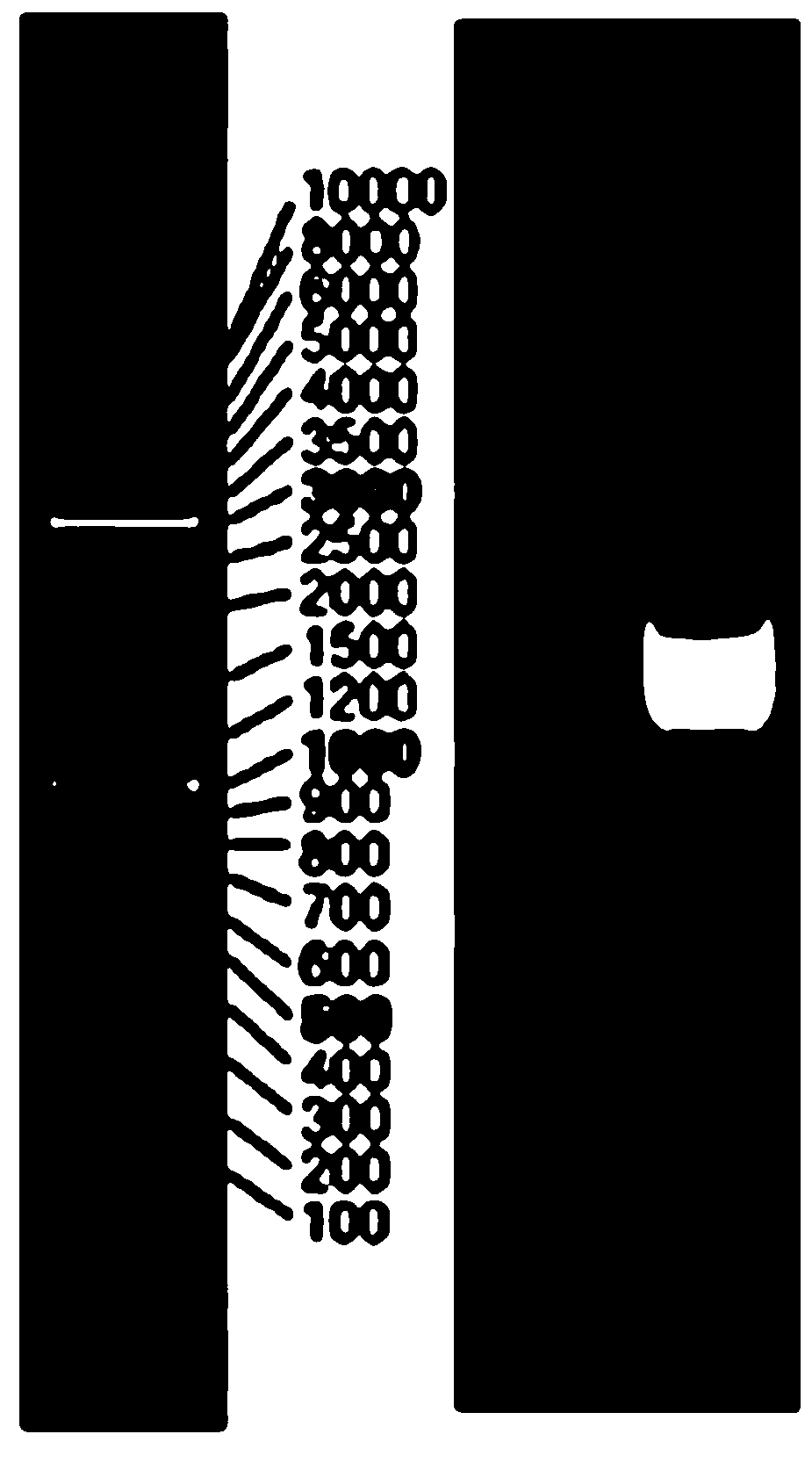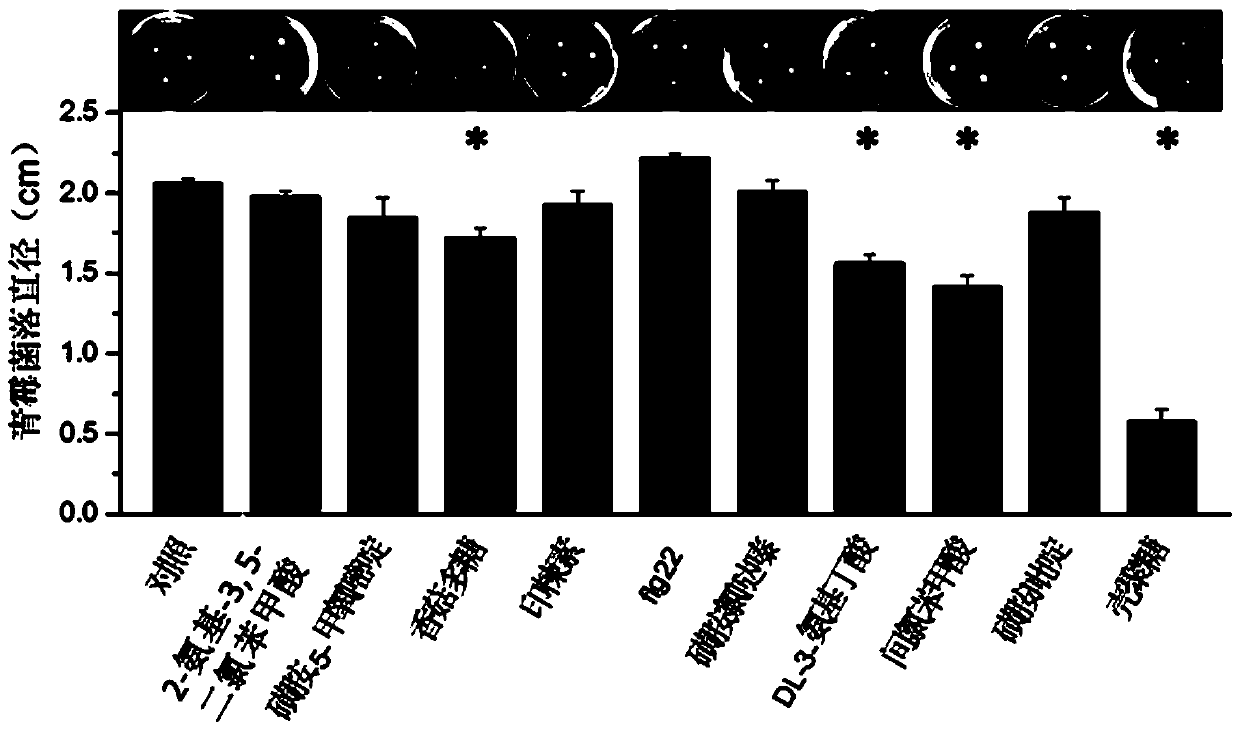Plant-immunity resistance inducer and application thereof
An immune inducer and plant technology, applied in the field of plant immune inducers, can solve the problems of increasing the cost of citrus production and sales, enhancing the drug resistance of Penicillium bacteria, and excessive pesticide residues in citrus.
- Summary
- Abstract
- Description
- Claims
- Application Information
AI Technical Summary
Problems solved by technology
Method used
Image
Examples
Embodiment 1
[0031] The screening of embodiment 1 plant immune elicitor
[0032] The pathogen of Penicillium in postharvest citrus was isolated and identified by PCR amplification of 18S rDNA sequence, and the isolated pathogen was confirmed to be Penicillium fungus. The results were as follows: figure 1 As shown, the citrus tissue pieces severely infected with penicillium were isolated and cultured on potato medium. After several passages and purification, a single pathogen was isolated on the culture plate. After amplifying pathogenic 18SrDNA by PCR, about 1500 base fragments were obtained, and these base sequences were obtained by sequencing. After comparison with the NCBI database, it was confirmed that the isolated pathogen was a fungus of the genus Penicillium.
[0033] Screening for plant immune elicitors, including benzothiadiazole, activin, chitosan, sulfachloropyridazine, 2-amino-3,5-dichlorobenzoic acid, m-chlorobenzoic acid, salicylic acid, salicylic acid Acid methyl ester, F...
Embodiment 2
[0037] Determination of the content of each component in the plant immune inducer of embodiment 2
[0038] At normal temperature, 20mg / L, 30mg / L, 40mg / L of 2-amino-3,5-dichlorobenzoic acid and 30mg / L of 2-amino-3,5-dichlorobenzoic acid were applied with filler Immunization was carried out on post-harvest citrus, and the isolated citrus penicillium was inoculated on the immunized citrus, and the control was citrus without plant immune elicitor and no pathogen infection.
[0039] At room temperature, 0mg / L, 20mg / L, 30mg / L, 40mg / L of sulfachloropyridazine and 30mg / L of sulfachloropyridazine plus fillers were applied to post-harvest citrus for immunization, and then separated The citrus penicillium was inoculated on the immunized citrus, and the control was the citrus infected by the pathogen without the application of plant immune elicitors.
[0040] At room temperature, 0 mg / L, 1 g / L, 2 g / L, 3 g / L chitosan and 2 g / L chitosan plus fillers were applied to post-harvest citrus for ...
Embodiment 3
[0045] Embodiment 3 Plant immune inducer compares with traditional citrus disease-resistant and fresh-keeping means
[0046] Take 2-amino-3,5-dichlorobenzoic acid 0.3g, sulfachloropyridazine 0.2g, chitosan 30g, azadirachtin 0.5g, Pingpingjiao 9g and tea seed powder 10g to form the plant immunity The inducer is made into columnar particles with a diameter of 3 mm and a height of 5 mm through a granulator, and packed into a bag of granular immune inducer by a packaging machine for future use.
[0047] Traditional citrus disease-resistant and fresh-keeping methods use low-temperature storage at 13°C as a comparison of traditional physical disease-resistant and fresh-keeping methods, and in a room temperature environment, fruit wax, 0.5g / L imazalil and 0.5g / L thiophanate-methyl are selected as treatments. Compared with traditional chemical disease-resistant fresh-keeping methods; observe the effect of these disease-resistant fresh-keeping methods in inhibiting the development of c...
PUM
 Login to View More
Login to View More Abstract
Description
Claims
Application Information
 Login to View More
Login to View More - R&D
- Intellectual Property
- Life Sciences
- Materials
- Tech Scout
- Unparalleled Data Quality
- Higher Quality Content
- 60% Fewer Hallucinations
Browse by: Latest US Patents, China's latest patents, Technical Efficacy Thesaurus, Application Domain, Technology Topic, Popular Technical Reports.
© 2025 PatSnap. All rights reserved.Legal|Privacy policy|Modern Slavery Act Transparency Statement|Sitemap|About US| Contact US: help@patsnap.com



